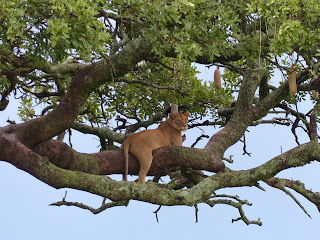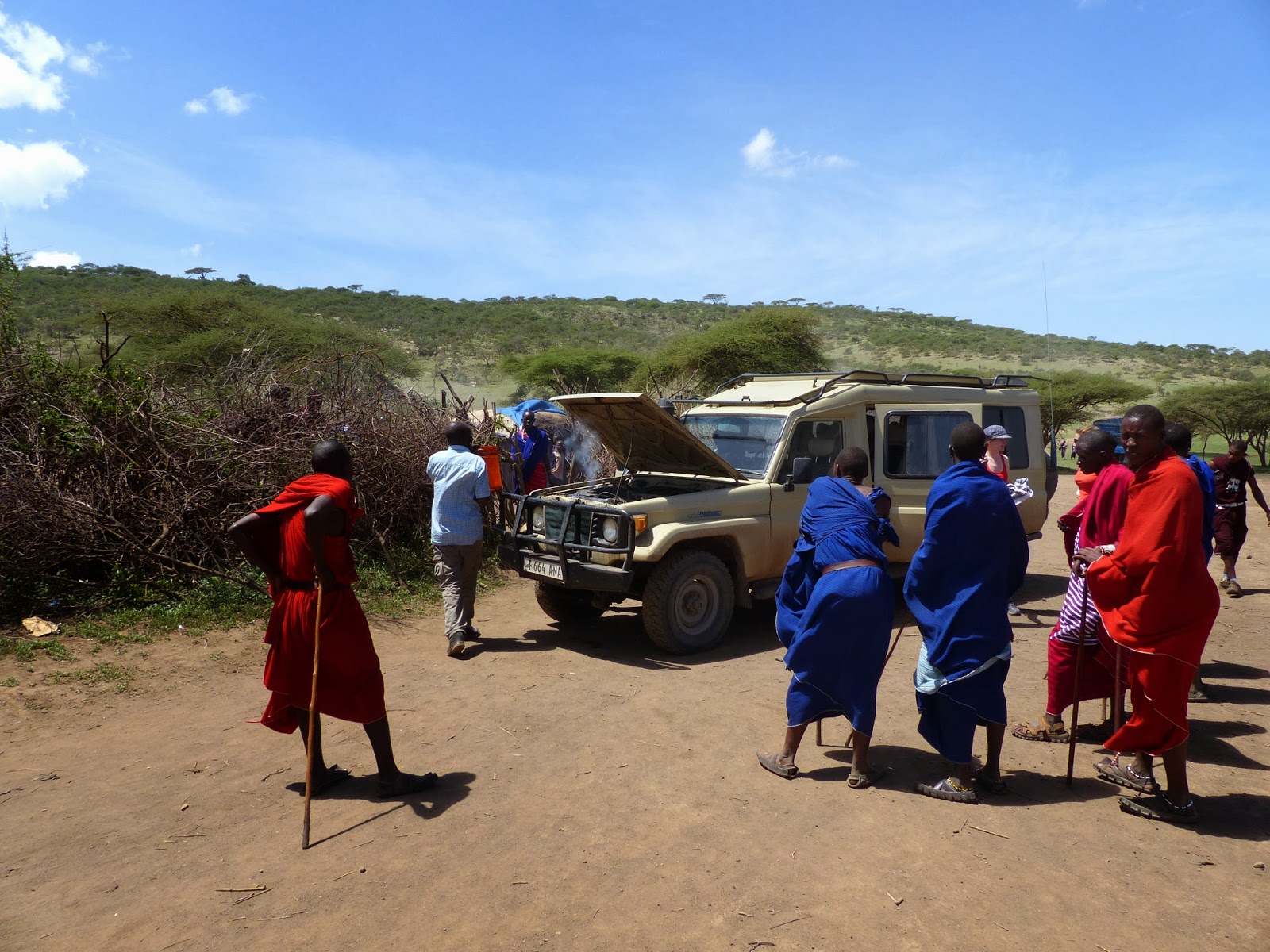The last days of our stay in Uganda were marked by increasingly sensational activities. First, we went for a white water rafting near the city of Jinja. For both of us, it was the first time on the white water. Honestly, before I even did not know what the rafting exactly was. We made it on the river called ... White Nile, the same Nile that is the longest river in the world, it has its source somewhere in Burundi, then through Victoria Lake flows into Uganda, and then up North to merge with Blue Nile in Khartoum and to form the one that most of the Europeans have seen in Egypt. Our rafting route had 8 rapids i.e. small waterfalls when the raft, which is actually an inflatable boat, falls nose down, everyone onboard gets seriously wet and shaky and often it flips over altogether. Out of three rafts around, we were the only one that did not capsize :), though occasionally we were losing our crew members including the instructor once. To keep long story short, while rafting on the Nile the adrenaline is guaranteed.
So, having raised our adrenaline level while rafting, we felt ready to go into the heart of Africa, to west Uganda, at the border with Congo and Rwanda, the country of high mountains. Our destination was Bwindi rainforest, one of the oldest wildlife sanctuaries in Africa, that is called by the locals the Impenetrable Forest. It is a thick jungle indeed, but what makes it really special are its very unusual and even more impressive inhabitants – mountain gorillas - our distant cousins, docile giants. The first encounter with them is a hair-rising experience. After two hours trekking into the jungle, we came finally to hear their grunts, but still could not see them as they were behind the thick 'wall' of leaves. While the rangers were cutting the foliage separating the beast from us, the grunts became more intense and we could just feel that something very big, and potentially dangerous, is moving without being able to tell if it moves fast or slow, towards us or the opposite direction. Suddenly, the gorilla appeared, it was much closer that we have ever imagined that it would be, something like one meter and a half – we were clearly within its hand reach. If it wanted it could easily crash us and looked big and strong enough to be able to tear us in half. We kept on hoping that the rangers knew what they were doing while letting us so close to the beasts - fortunately they did :)!


































































